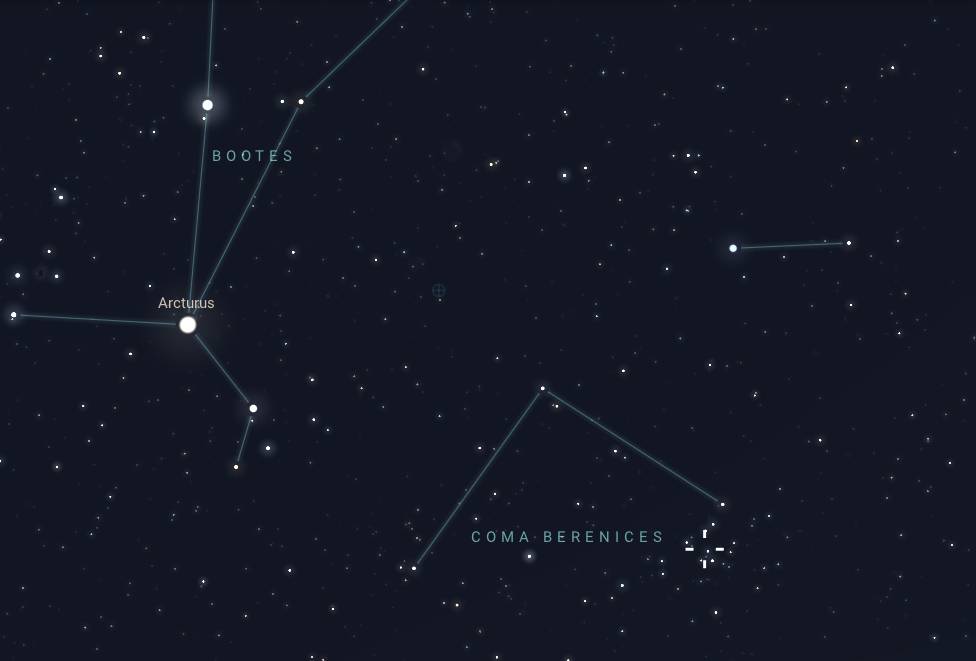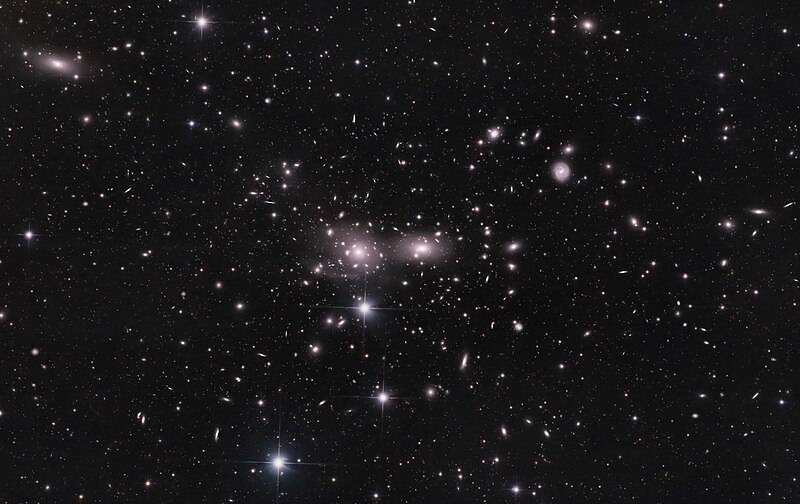The Coma Star Cluster, also known as Melotte 111 or Collinder 256, is an open star cluster situated in the constellation of Coma Berenices, within the northern celestial hemisphere. Located relatively close to the celestial north pole, it is visible from most northern latitudes, lying approximately 280 light-years away from Earth, making it one of the closest open clusters to our solar system.
The cluster has been known since ancient times and has held significance in various cultures throughout history. It was catalogued as Melotte 111 by British astronomer Philibert Jacques Melotte in the early 20th century, who recognized it as an open cluster. This classification was later confirmed by other astronomers, marking it as one of the more prominent and accessible star clusters in our galactic neighbourhood.
Physical Characteristics
The Coma Star Cluster is a relatively young open star cluster with a population of several dozen to a few hundred stars, depending on the defined cluster boundaries. The majority of its stars are young, hot blue-white stars, though some cooler, red stars are present, adding colour contrast to the cluster. The stars within the cluster are thought to be around 400 to 600 million years old, which is relatively young in cosmic terms. This youth, along with the cluster’s proximity, makes it an ideal target for studying stellar evolution, especially the formation and development of young star clusters.
The loose structure of Melotte 111 sets it apart from denser clusters. It spans a broad region in the sky, covering several degrees, making it one of the largest apparent clusters visible to the naked eye. This wide spread of stars suggests that the gravitational bonds within the cluster are relatively weak, allowing its stars to drift apart over time.
Observation
With an apparent magnitude of approximately 1.3, Melotte 111 is visible to the naked eye under dark skies, where it appears as a hazy patch of light. Observing it through binoculars or a small telescope reveals it as a loose yet noticeable grouping of stars, extending across several degrees—much larger than the apparent size of most other clusters. The best time to observe the cluster is during the spring months (March to May), when the constellation Coma Berenices is high in the night sky, making it particularly well-placed for northern hemisphere observers.

From southern latitudes, the Coma Star Cluster appears lower in the northern sky and may be partially obscured by the horizon, depending on the observer’s location and season. Observers near the equator have a better chance of viewing the cluster, while those farther south may find it more challenging to observe.
The Coma Star Cluster is a captivating and accessible object for amateur astronomers. Its loose but rich grouping of stars provides a fascinating glimpse into the dynamic processes of star formation and stellar evolution within our galaxy, making it an enduring subject of study and appreciation in the night sky.



